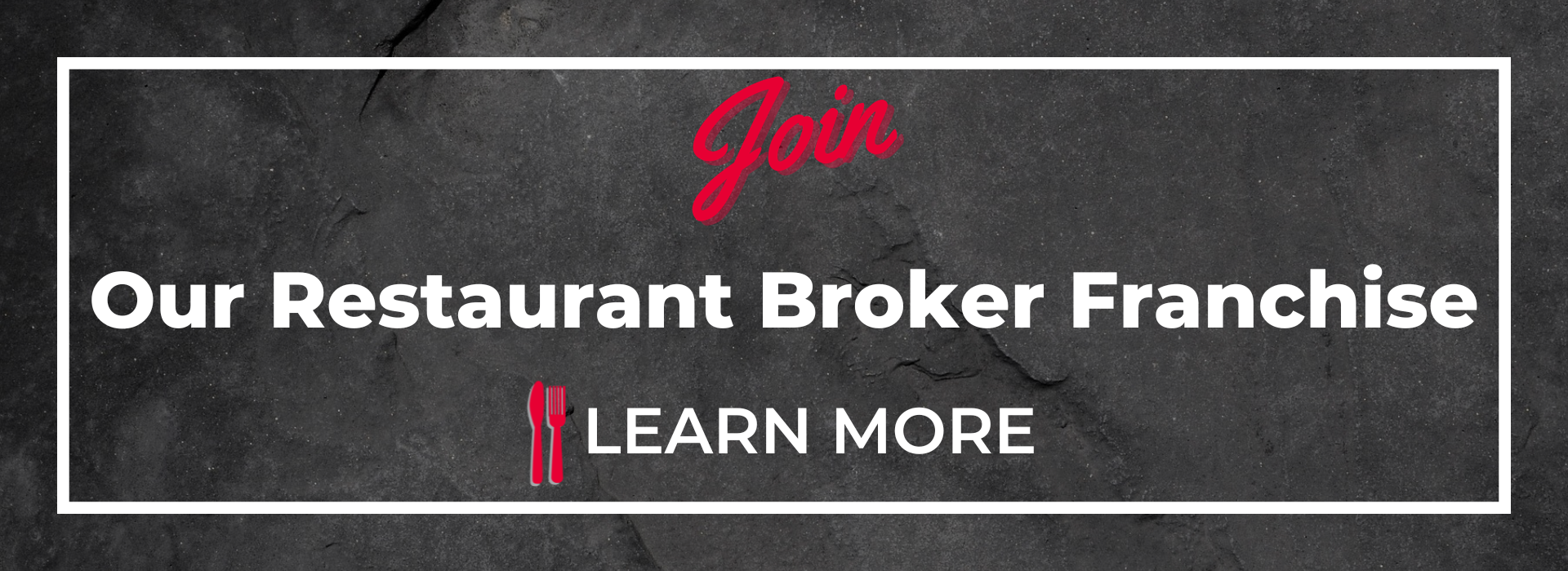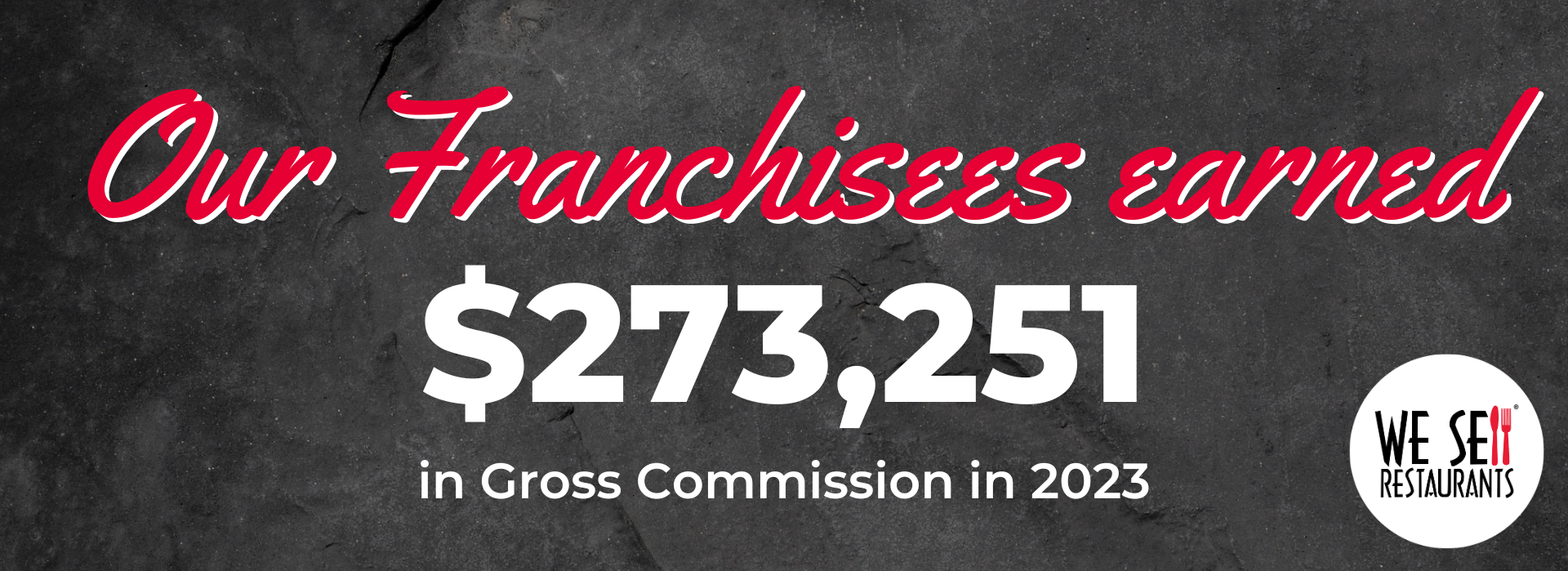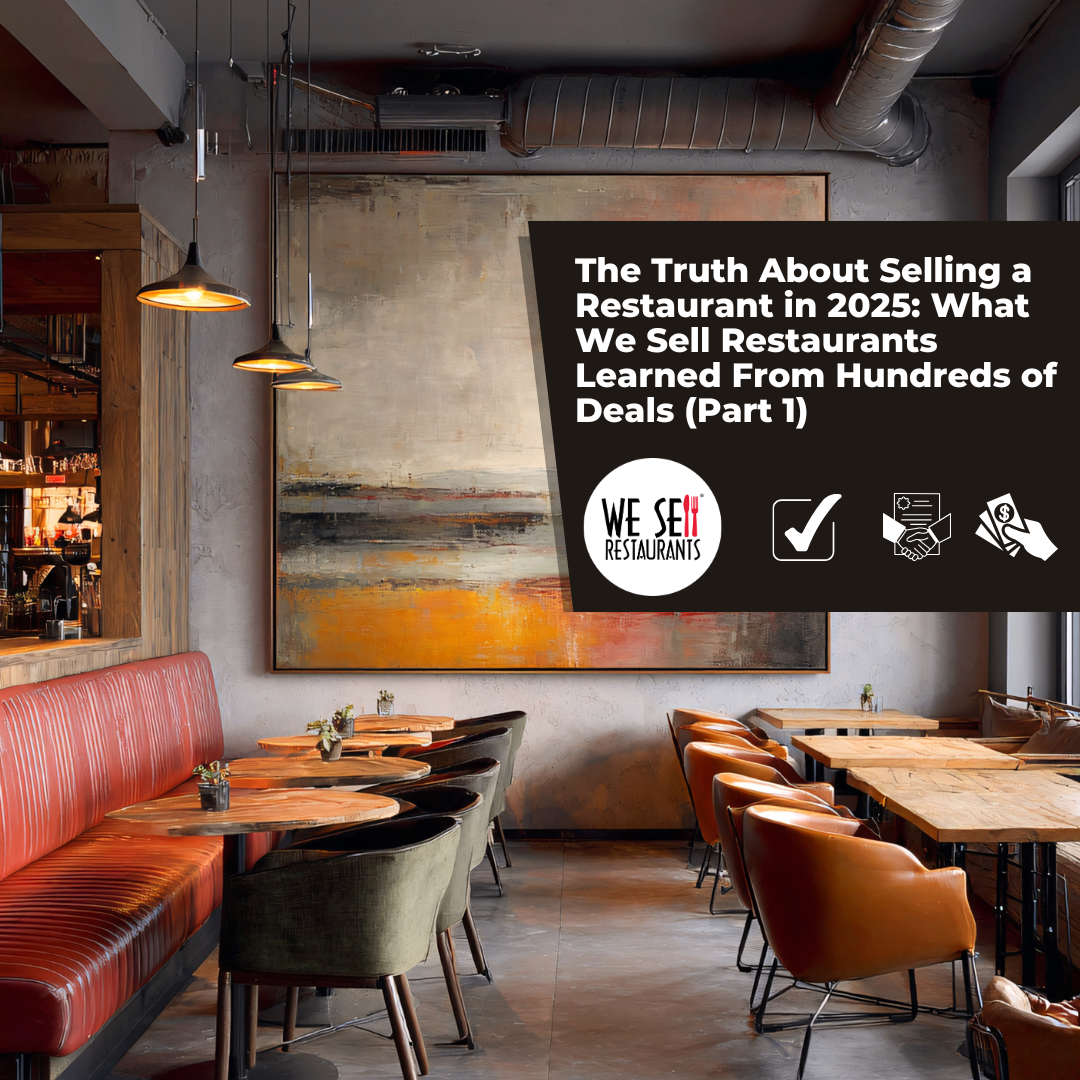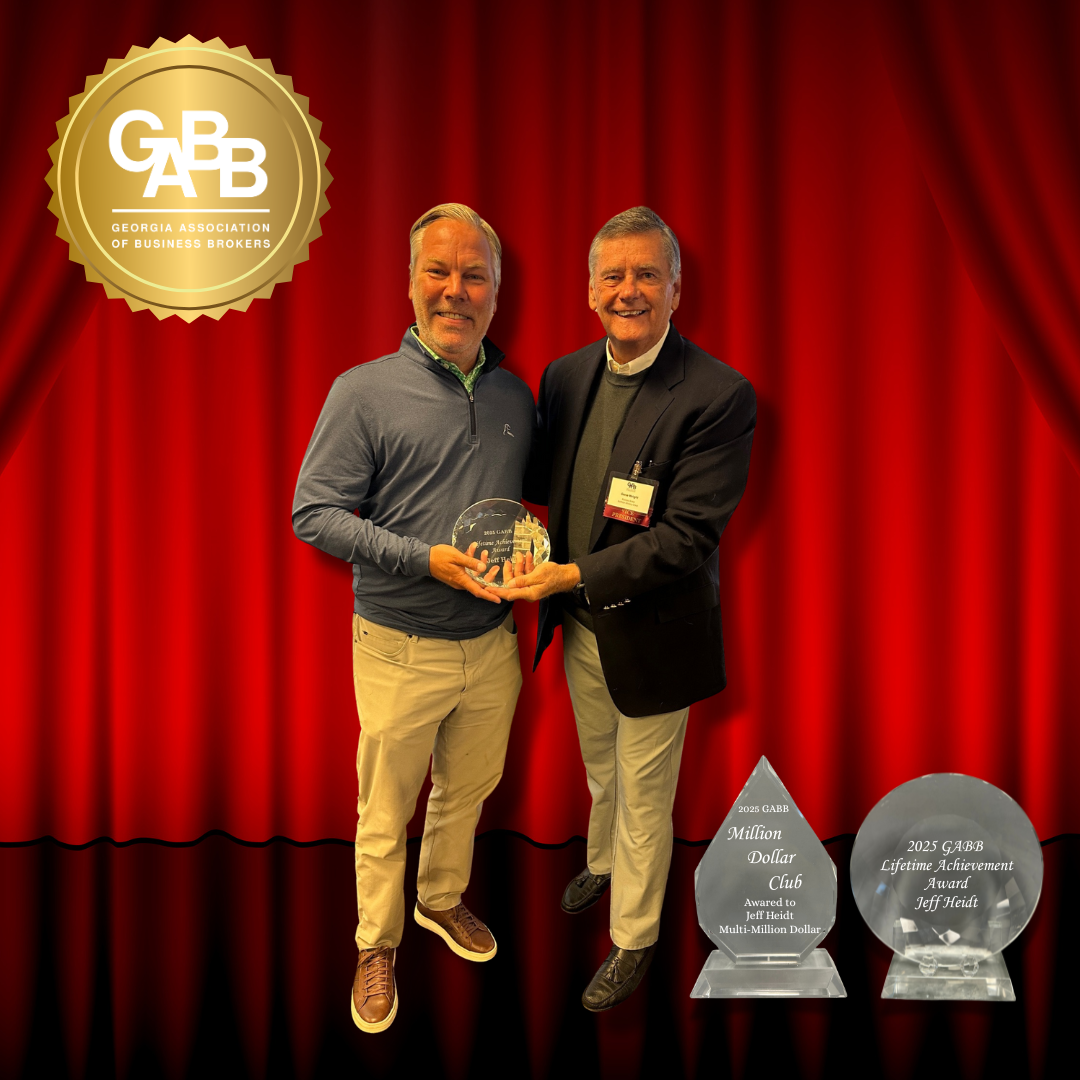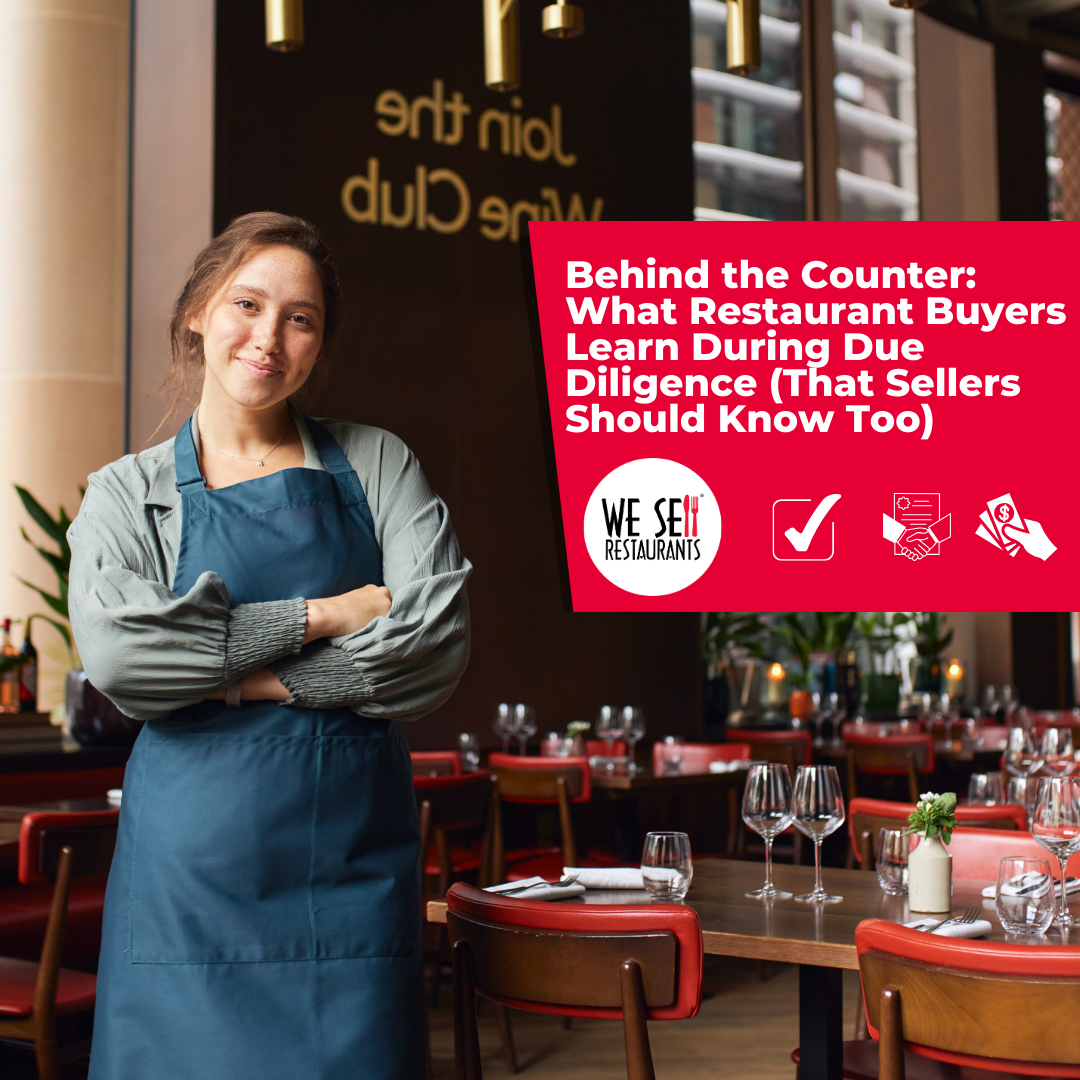Part 1 of a 3-part series on AI and the restaurant industry written by We Sell Restaurants.
If you're a restaurant owner still on the sidelines about artificial intelligence (AI), it's time to act. AI is no longer an idea for the future. Instead, it is actively shaping how customers perceive your restaurant, influencing potential buyers, and impacting your valuation. As a Restaurant Broker, I've witnessed how AI-powered tools analyze online data—reviews, social media, websites—to create narratives that can make or break your business.
The National Restaurant Association's 2025 State of the Restaurant Industry report emphasizes that customer perception is paramount to driving traffic and loyalty. It notes that 9 in 10 adults enjoy dining at restaurants for unique flavors and experiences they can't replicate at home, and 81% of consumers would dine out more if they had the financial means.
However, perceptions are not just shaped by the in-person experience any long but instead, through your digital footprint. Aligning your online presence with your store’s values is critical to meeting customer expectations and standing out in a competitive market. It’s also important to understand before listing the business, which is why this Restaurant Broker leans into AI to learn more about what I’m selling and the results a would-be buyer might discover.
It's important to know that AI tools like ChatGPT, Perplexity, or Grok are now gatekeepers of your restaurant’s story. They synthesize online data to answer questions like “What’s this restaurant like?”—and their answers can sway diners, lenders, and yes, even those considering the purchase of your restaurant. buying buyers.
If you aren’t familiar with models like ChatGPT, Perplexity, or Grok, don’t worry. Simply grab anyone in your family under the age of 30 who hasn’t been living under a rock for the past two years and they can follow these prompts.
After all, while AI or artificial intelligence is being touted for productivity improvements in restaurants ranging from optimizing food costs, taking recipes from tattered paper into measured manuals and helping to schedule your staff based on predictive data points, that’s not even the most important reason why it is most critical today.
The most important use of AI right now is much simpler: understanding what the world sees when they ask a tool like ChatGPT or Perplexity about your restaurant. To learn what AI knows about your restaurant, follow this step-by-step guide to harnessing AI to improve reviews, refine branding, and boost sales.
Step 1: Discover What AI is Saying About You
Start with a simple prompt:
“Describe my restaurant, [insert name], based on what’s available online.”
Be prepared. If your business hasn’t been actively building a positive digital footprint, what you see might sting. AI tools synthesize everything from that four-year-old website your nephew built as a favor, to low-star Yelp reviews, poorly lit food photos, and even public posts linked to your name.
If your restaurant is mentioned in local blogs or on review platforms, that’s what AI is repeating. And if a viral post from a dissatisfied customer is floating out there, it’s likely front and center in the summary.
AI is no longer pulling just from your business accounts—it connects the dots across the web. So if your name is publicly associated with the restaurant, your own social posts may be factored into its understanding of your brand. What is your public persona online? Is the stance you are taking likely to tick off half the population? Just remember that like it or not, AI is building a story—and your restaurant is the subject, and you are a starring character in the narrative. When it is time to sell, what you have said online could have unintended consequences for the pricing, reputation, or time on market.
Step 2: Tell AI Who You Really Are
Now it’s your turn to lead the conversation. When you started this restaurant, you had an image of what it would mean to the community and how your service would be different or unique. Perhaps you put this into the form of a mission statement, core values, or brand guidelines. Use those now and ask:
“Does this match what customers are saying online about my restaurant?”
If you say your restaurant is “locally sourced” and “sustainability-focused,” but none of your reviews, social posts, or website language mention those phrases, there’s a disconnect in what the customer is experiencing and writing online. And in the world of AI, perception is reality—until you change the inputs.
It is never too late, however. Here’s how to retrain the narrative:
- Encourage Targeted Reviews: Ask guests to leave reviews highlighting specific values (e.g., “farm-fresh ingredients”) or signature dishes. Offer incentives like a free amuse-bouche for reviews mentioning a local sourcing story to start building credibility and the narrative you are looking for.
- Showcase Your Values: Post behind-the-scenes content on social media. Think about photos of your chef visiting a local farm or videos of sustainable practices. Use hashtags like #FarmToTable or #SustainableDining.
- Update Digital Assets: Ensure your website and menu emphasize key brand terms like “fresh” or “local.” AI learns from consistent signals, so repetition is key.
Over time, these efforts will shift AI’s narrative to reflect your true brand, aligning with customer expectations for authenticity and value. After all, large language models are built to learn—and you can teach them.
Step 3: Ask AI for Help—And Listen Closely
Once you’ve reviewed what AI thinks of your restaurant, ask it for marketing advice. Literally.
Use a prompt like this:
“You are a restaurant marketing expert. After reviewing customer reviews and online information for [insert restaurant], identify the differences between our brand vision and the public perception. Suggest improvements to my website copy, menu language, social media presence, and online reviews.”
Don’t forget to upload your current menu as a .pdf or image. Remember, AI can now both see and hear, meaning it can analyze visual items like your menu and provide feedback on whether your language aligns with your brand.
You might receive responses like:
- “The term ‘fresh’ appears only once on your website, despite it being central to your brand messaging.”
- “Your social media channels don’t reinforce your ‘farm-to-table’ concept with visuals or hashtags.”
And remember—AI isn’t perfect. If it misses something obvious (like your tagline showing up on every page), push back. Say:
“Actually, our tagline ‘Because Fresh is Best’ is on every page of the website. How can I make it stand out more?”
Don’t just accept the answers. Refine them with your real-world knowledge of your business. Then ask again.
Step 4: Learn From Your Competitors
Once you’ve done the internal work, turn your attention outward.
Ask ChatGPT:
“Who are the top five competitors in my area for [restaurant name/type/city]?”
Then follow up with:
“Compare my restaurant to these competitors. What are their strengths? What are my weaknesses?”
This step often reveals insights that would otherwise take weeks of mystery shopping or SEO audits. You might find:
- Your wine list starts at $50/bottle, while the top-rated competitor has rave reviews for bottles under $30.
- Your parking situation is a major source of negative reviews, while a nearby competitor offers free valet service.
Each one of these items becomes a strategic opportunity—not just for sales but for long-term positioning. These insights, which align with the National Restaurant Association’s note that competition will intensify in 2025, help you address weaknesses and capitalize on opportunities.
The cost to hire a consultant to obtain these insights just a few short months ago would be beyond the reach of the average restaurant owner. Now, AI delivers these insights in seconds, right at your fingertips.
Step 5: Get a Plan and Take Action
If all of this feels overwhelming, don’t stop here. Ask AI:
“Can you create a 100-day plan based on the recommendations above, prioritized for maximum impact?”
You might receive something in response that looks like this:
- Week 1-2: Update website copy and headlines to emphasize “fresh” and “local.”
- Week 3-4: Rewrite menu descriptions to highlight sustainable ingredients.
- Week 5-8: Launch a review campaign with incentives for guests mentioning farm-fresh dishes.
- Week 9-12: Schedule weekly social posts showcasing local sourcing partnerships.
Print it. Delegate parts of it. But most importantly, start executing. This is a low-cost, high-return exercise that brings clarity and momentum into your business.
Bonus: Explore the Visual Side of AI
Think this is exciting? Keep going. Try these prompts:
- Upload photos of your menu board and ask for layout or copy suggestions.
- Show an exterior shot and ask: “How can I improve curb appeal?”
- Ask for a rendering: “What would a patio space look like here?”
Yes, tools like ChatGPT (especially when connected to image generation tools like DALL·E) can give you visuals—bringing your ideas to life before you ever call a contractor.
The Bottom Line: Shape Your Digital Story
Your restaurant’s story is being written by algorithms daily, based on online data. The National Restaurant Association’s 2025 report confirms that customer perception drives success, with consumers valuing restaurants for their unique offerings and operators focusing on on-premises experiences to boost traffic. By using AI to understand and shape this narrative, you can enhance reviews, strengthen branding, and increase sales—whether you’re aiming to grow or sell.
This process can be humbling—but it’s also empowering. You’re not just building a brand for guests; you’re now shaping the digital fingerprint AI uses to describe your restaurant to the world.
Coming Up Next: AI for Restaurant Productivity & Margin Growth
This is just phase one. In the next article, this Restaurant Broker will share how AI can help you improve operations, reduce costs, forecast labor, and unlock margin improvements across the board.
But for now, ask yourself:
Are you still sitting on the sidelines of AI?
If so, this is your invitation from your Restaurant Broker to go boldly, step out of your comfort zone, and find out what AI can do for your business.
Coming Up Next: AI for Restaurant Productivity & Margin Growth This is just phase one. In the next article, this Restaurant Broker will share how AI can help you improve operations, reduce costs, forecast labor, and unlock margin improvements across the board.
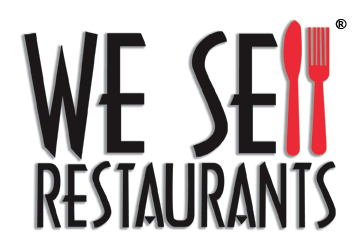
 404-800-6700
404-800-6700
